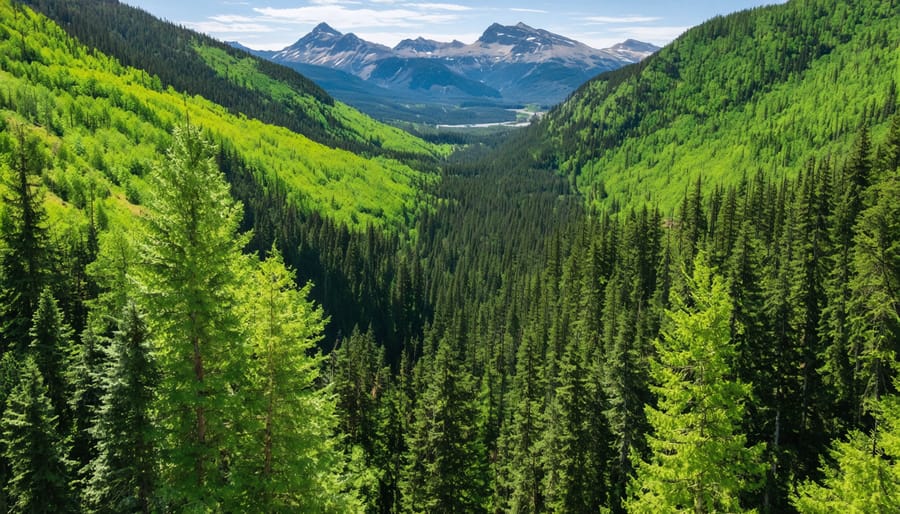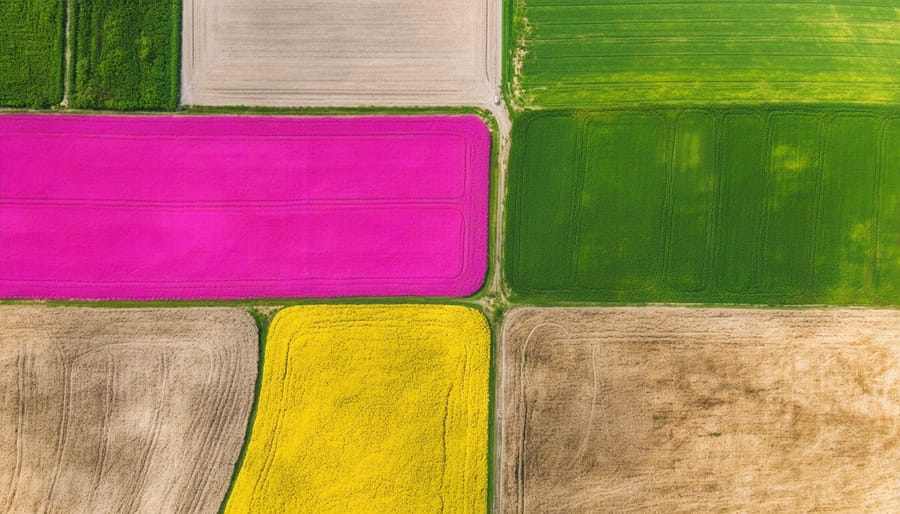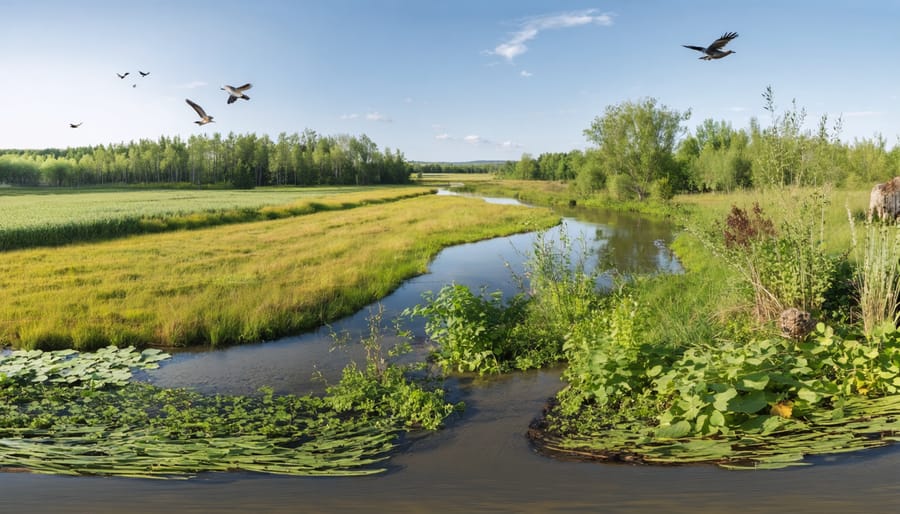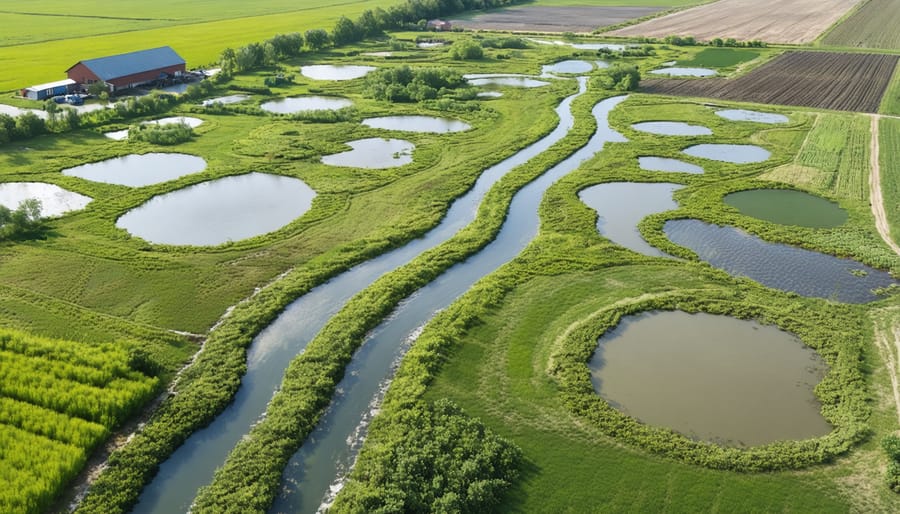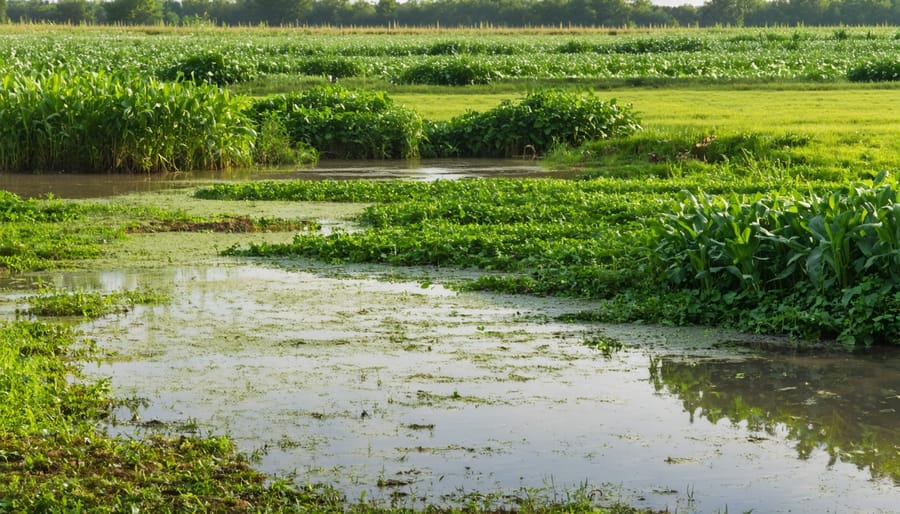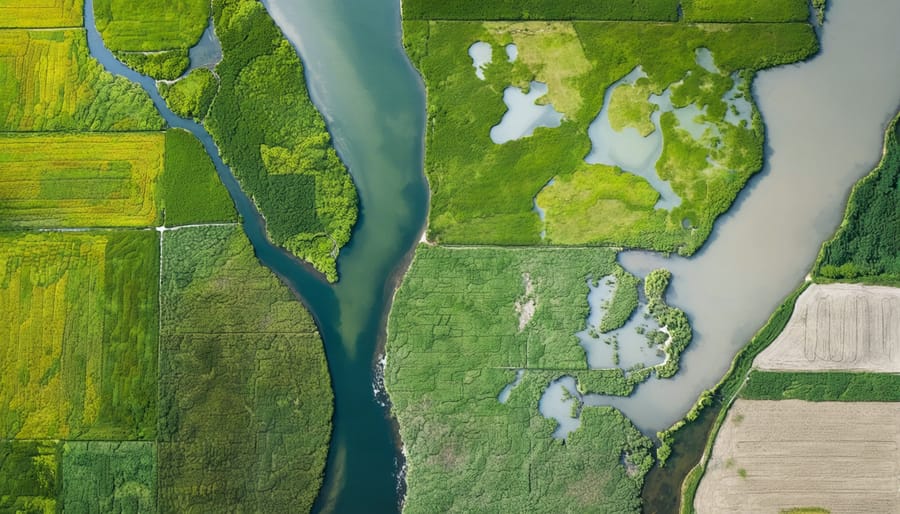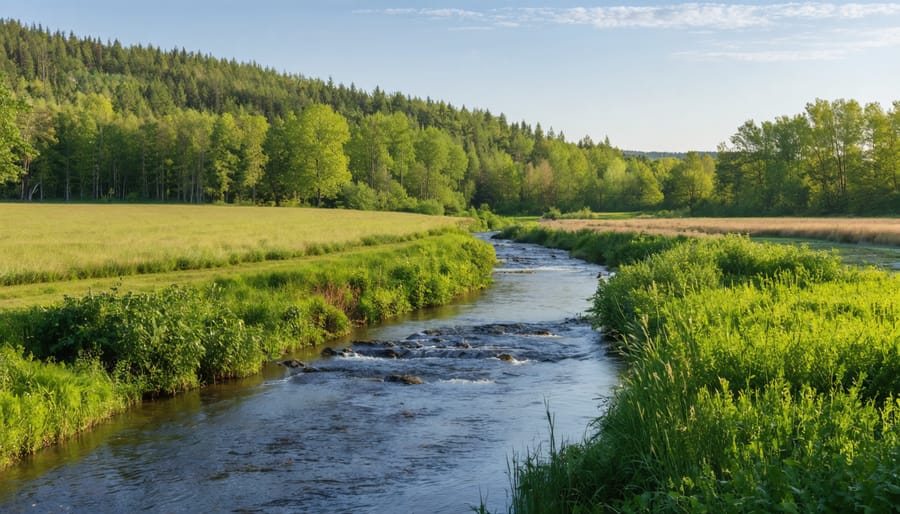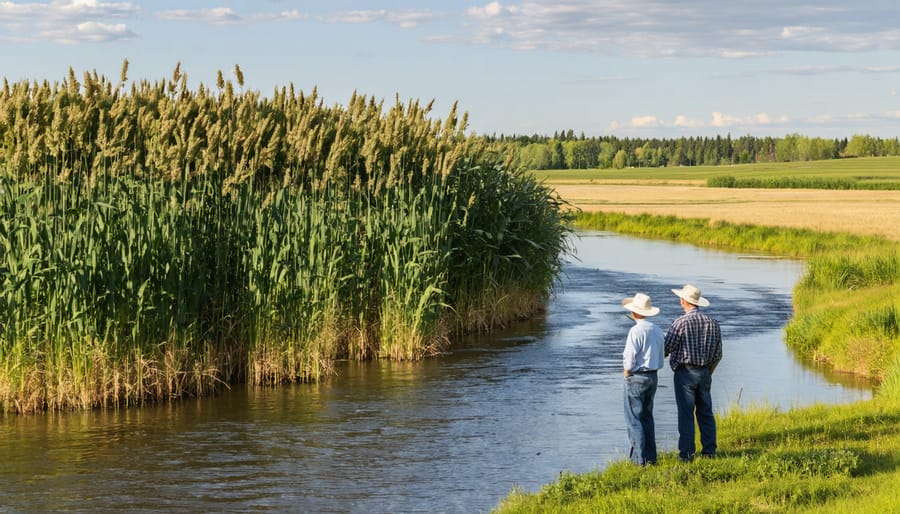Nestled within Canada’s vast wilderness, the boreal forest’s climate impact extends far beyond its borders, serving as a vital component of our alpine ecosystems and agricultural heritage. These ancient woodlands, stretching across Alberta’s northern reaches, store more carbon per hectare than any other terrestrial ecosystem, making them indispensable allies in sustainable farming practices. For Alberta’s agricultural community, understanding the intricate relationship between boreal forests and alpine environments isn’t just an academic exercise—it’s a practical necessity that directly influences soil health, water management, and crop yields. As stewards of the land situated along the boreal forest’s southern edge, farmers play a crucial role in preserving this delicate ecosystem while harnessing its natural benefits to enhance their agricultural operations. The forest’s influence on local weather patterns, soil composition, and biodiversity creates unique opportunities for adaptive farming techniques that align with nature’s rhythms.
Understanding the Boreal-Alpine Connection
Unique Features of Alberta’s Boreal Zones
Alberta’s boreal forests stand out with distinct characteristics that make them vital to our regional ecosystem. Unlike other boreal regions, our forests feature a unique mix of white and black spruce, trembling aspen, and balsam poplar that thrive in the varied terrain where the boreal meets the Rocky Mountains. This combination creates a resilient ecosystem that supports diverse wildlife and helps maintain soil health for nearby agricultural lands.
What makes Alberta’s boreal zones particularly special is their role in water regulation. The forest acts like a massive natural filter and storage system, managing snowmelt from the Rockies and maintaining consistent water flow throughout the year. This process is crucial for local farmers who rely on this water supply for their crops.
Our boreal forests also demonstrate remarkable adaptability to extreme temperature fluctuations, with trees that can withstand winter temperatures dropping below -40°C and summer highs reaching 30°C. This adaptability helps protect surrounding farmland from harsh weather conditions and provides natural windbreaks for agricultural operations.
The forest floor’s thick moss layer, unique to our region, acts as a natural carbon bank, storing significant amounts of greenhouse gases while enriching the soil with essential nutrients.
The Alpine-Boreal Transition Zone
Here in Alberta, we witness a remarkable natural phenomenon where our boreal forests meet the Rocky Mountains, creating what we call the Alpine-Boreal Transition Zone. This unique area, spanning roughly between 1,000 and 1,500 metres in elevation, showcases how these two distinct ecosystems blend together and support each other.
For our farming community, this transition zone is particularly significant. The mixture of alpine and boreal vegetation creates natural windbreaks and helps regulate local weather patterns, directly impacting our agricultural practices. The deep root systems of both alpine and boreal species work together to prevent soil erosion and maintain soil moisture levels, which is crucial for nearby farmland.
Many Alberta farmers have noticed that fields adjacent to these transition zones often benefit from improved moisture retention and more stable temperatures. The mixed forest canopy also provides essential habitat for pollinators and beneficial insects that support our crops. Understanding this relationship helps us make better decisions about land use and conservation, especially when planning agricultural activities near these vital ecological boundaries.
This natural partnership between alpine and boreal ecosystems demonstrates how different environments can work together to create more resilient landscapes for agriculture.
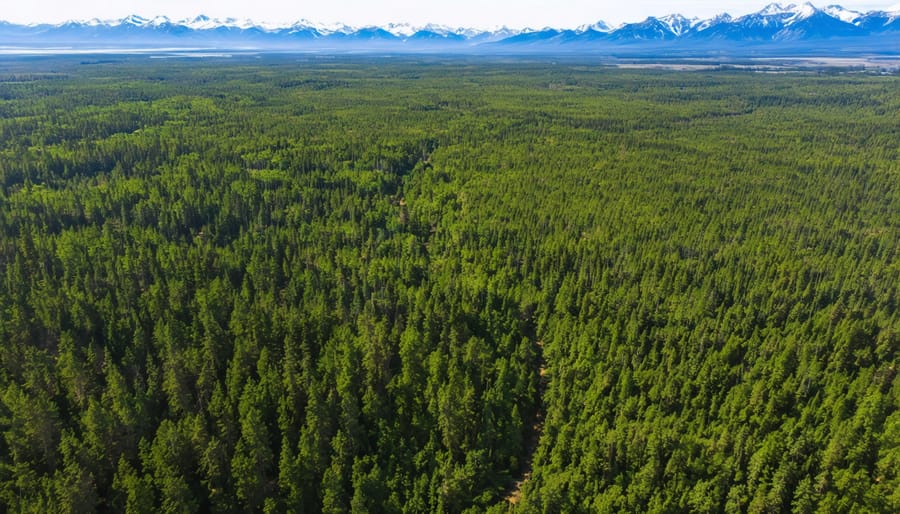
Carbon Storage Capabilities
Soil Carbon Storage Mechanisms
The rich, dark soils of Alberta’s boreal forests are remarkable carbon vaults, storing vast amounts of carbon through several natural processes. These forest soils demonstrate impressive carbon capture potential through their unique layering system and biological activities.
The process begins with the forest floor’s thick organic layer, composed of slowly decomposing needles, leaves, and woody debris. In our cold northern climate, this organic matter breaks down more slowly than in warmer regions, allowing carbon to accumulate over time. The soil’s structure, featuring a mix of clay, silt, and organic matter, creates stable compounds that effectively lock carbon in place.
What makes our boreal forest soils particularly effective at carbon storage is the presence of permafrost in deeper layers. This permanently frozen ground prevents organic matter from decomposing, essentially creating a long-term carbon bank. The active layer above the permafrost also plays a crucial role, with its seasonal freeze-thaw cycles helping to incorporate organic matter deeper into the soil profile.
Mycorrhizal fungi networks in these soils form another important storage mechanism. These beneficial fungi create thread-like structures that not only help trees access nutrients but also produce glomalin, a sticky protein that binds soil particles together and stores significant amounts of carbon.
Understanding these natural storage mechanisms can help local farmers adapt similar principles to enhance carbon storage in their agricultural soils, contributing to both soil health and climate resilience.
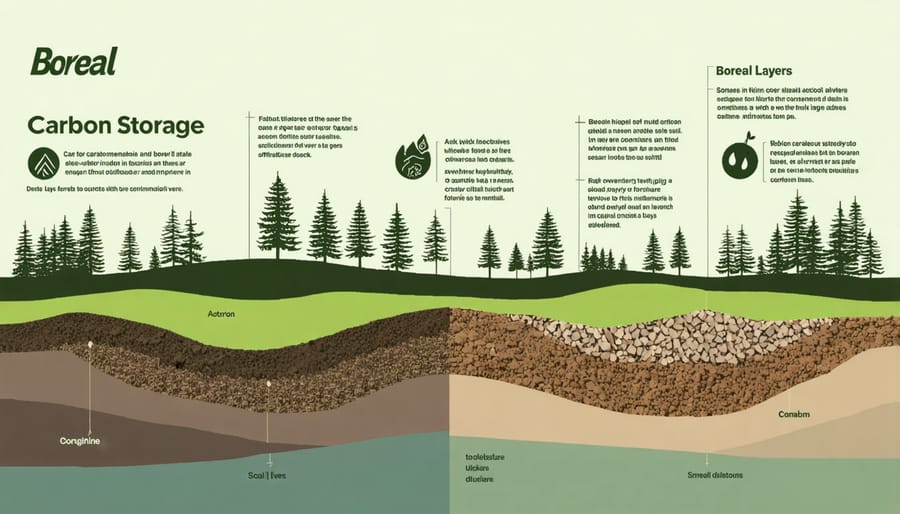
Vegetation’s Role in Carbon Capture
The boreal forest’s role in carbon capture is nothing short of remarkable. Here in Alberta, our northern forests act as one of Earth’s most efficient natural carbon storage systems. These forests capture and store approximately 11% of the world’s carbon dioxide, making them vital players in our fight against climate change.
The process starts with the trees themselves. Through photosynthesis, boreal species like black spruce and jack pine convert carbon dioxide into biomass, storing it in their trunks, branches, and roots. But what makes boreal forests particularly special is their soil composition. The cold climate slows decomposition, allowing dead plant material to accumulate in thick layers of organic matter, creating a massive carbon reservoir.
Local studies from the University of Alberta show that a single hectare of boreal forest can store up to 250 tonnes of carbon, equivalent to the emissions from 54 cars driving for one year. What’s even more fascinating is the role of the forest floor mosses and lichens. These often-overlooked plants are incredibly efficient at trapping carbon and can continue doing so even during our long winter months.
For Alberta’s farming community, understanding this natural carbon capture system offers valuable insights into sustainable land management practices. Many farmers are now incorporating tree buffers and maintaining natural boreal vegetation patches on their properties, effectively creating mini carbon sinks while supporting local biodiversity.
Practical Applications for Alberta Farmers
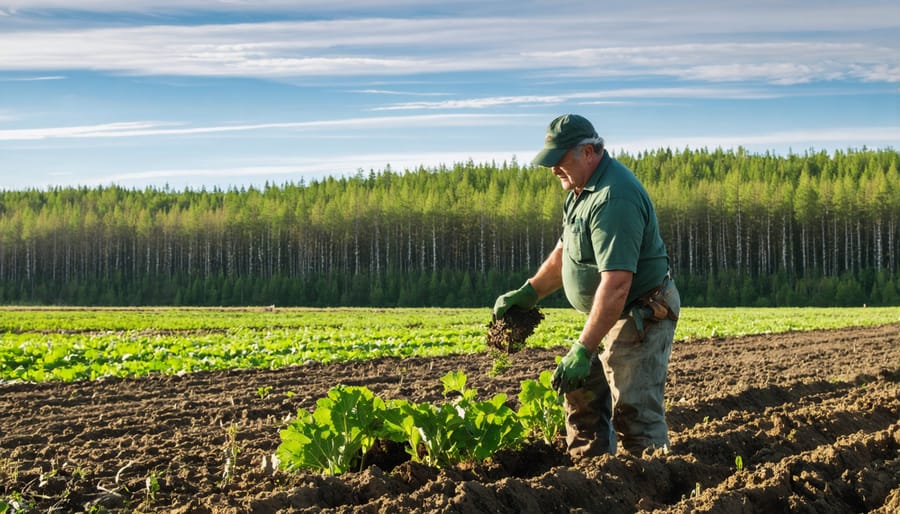
Land Management Techniques
Managing boreal forest margins requires a careful balance of traditional knowledge and modern sustainable forest management practices. For Alberta farmers, this means implementing specific techniques that maintain the health of these vital ecosystems while supporting agricultural operations.
Key practices include establishing buffer zones between farmland and forest edges, typically 30-50 metres wide. These zones help prevent soil erosion and provide wildlife corridors, essential for maintaining biodiversity. Regular monitoring of tree health along these margins, particularly spruce and pine species, helps identify potential issues before they become severe.
Selective harvesting, rather than clear-cutting, is crucial when managing forest edges. This approach maintains forest structure while allowing for sustainable resource use. Many Alberta farmers have found success with the “feathered edge” technique, where trees are gradually thinned from the forest margin to the agricultural land, creating a more natural transition zone.
Soil management is equally important. Maintaining proper drainage systems helps prevent waterlogging, which can damage both crops and forest roots. Adding organic matter to buffer zones strengthens soil structure and supports mycorrhizal networks that benefit both forest and farm ecosystems.
Fire management planning is essential, given the boreal forest’s natural fire ecology. Creating and maintaining firebreaks, while allowing for controlled burns when necessary, helps protect both agricultural assets and forest health. Local fire departments can provide guidance on developing effective fire management strategies suited to specific properties.
Through these practices, farmers can effectively manage the transition between agricultural land and boreal forest, ensuring both ecosystems thrive while supporting sustainable agricultural production.
Economic Benefits and Incentives
Farmers and landowners in Alberta’s boreal forest regions can access several financial incentives and support programs designed to promote conservation while maintaining agricultural productivity. The Alberta Conservation Association offers annual grants ranging from $3,000 to $25,000 for projects that enhance wildlife habitat and protect native vegetation in boreal areas.
The Environmental Farm Plan (EFP) provides cost-sharing opportunities, where farmers can receive up to 70% funding for implementing sustainable practices that protect boreal forest patches on their land. These practices include establishing buffer zones, managing livestock access to forested areas, and protecting wetlands.
Carbon offset programs are particularly valuable for properties with boreal forest coverage. Through Alberta’s Carbon Offset System, farmers can earn carbon credits for maintaining and expanding forest cover, typically generating $15-30 per tonne of carbon sequestered. A well-managed hectare of boreal forest can sequester approximately 2-3 tonnes of carbon annually.
The Alternative Land Use Services (ALUS) program offers annual payments for ecosystem services, with participating farmers receiving $15-50 per acre for maintaining natural areas, including boreal forest patches. Local success stories include the Thompson family farm near Peace River, which receives $4,500 annually for preserving 100 acres of boreal forest as wildlife corridors.
Tax incentives are also available through the Ecological Gifts Program, allowing landowners to receive significant tax benefits when they donate land or establish conservation easements. This program has helped protect over 15,000 hectares of boreal forest in Alberta while providing substantial tax advantages to participating farmers.
The boreal forest in our alpine regions represents more than just a natural wonder – it’s a vital part of Alberta’s agricultural landscape and environmental future. As stewards of the land, we’ve seen how these forests contribute to soil health, water management, and climate stability across our farming communities. By understanding and protecting these ecosystems, we’re investing in sustainable agriculture for generations to come.
Our journey through understanding the boreal forest’s role in the alpine biome highlights the delicate balance between agricultural development and environmental conservation. The key is finding ways to work alongside these natural systems rather than against them. Whether it’s maintaining buffer zones between farmland and forest edges or participating in local conservation initiatives, every action counts.
Looking ahead, let’s commit to preserving these crucial ecosystems while advancing our agricultural practices. Consider joining local forest management programs, implementing sustainable farming techniques that protect nearby forest areas, and sharing knowledge with fellow farmers. Together, we can ensure that our boreal forests continue to support both our agricultural success and environmental well-being for years to come.

